MOSCOW INTERACTIVE
 Look at the picture. Write down three things you would like to know about this park. Read though the text. Does it answer your questions?
Look at the picture. Write down three things you would like to know about this park. Read though the text. Does it answer your questions?

Zaryadye Park, built in 2017, is a new attraction in Russia, and an essential part of the “green necklace” in Moscow’s historic city centre.
The design of Zaryadye Park is based on the principles of natural urbanism. Visitors can enjoy all of Russia’s habitats A) ..... as they walk down from the site’s upper terraces to its lower ones. To combine both urban and natural features engineers used a variety of techniques. They imported 250,000m3 of soil for planting trees. 25,000m3 of which were transported by barges on the Moskva River. Then, gardeners planted 650 new trees including birches, lindens, pines, maples, spruces, willows, oaks, rowans, bird cherry trees and apple trees.
The area around the park has also been improved. Moskvoretskaya Embankment has got a new image B) ..... . There’s also a leisure area with cafés, benches and a “Floating bridge” across the Moskva River. This landmark is a comfortable viewing point C) ..... and rises about 13 metres above the water’s surface. Its unique V-form design allows it to literally float over the surface of the river.
During the construction, builders and archaeologists unearthed many unique artefacts as well. For instance, they found the oldest street in Moscow – Great Street D) ..... . It was under the logs of a pavement built during the 17th-18th centuries. Archaeologists also found pottery from the 15th and 17th centuries, pilaster from a temple or castle and even a birch bark letter from the 14th century. Unlike normal paper letters this one was written on birch. Only three other letters like this have ever been found in Moscow. They also discovered a treasure E) ..... All of these findings will be on display in a specially built museum.
While the park is on what was once a huge wasteland, the site today is completely different. It has educational and entertainment halls like “Media Centre” and “Ice Cave” as well as a restaurant, a café, an underground car park and a concert hall which is partially “hidden” within the hill. The concert hall is one of the park’s main attractions as well as one of the best concert halls in the world – thanks to its acoustics. On the hall’s roof there is an amphitheatre partially covered by a transparent “glass bark” construction. A lot of festivals take place there. The park uses special technologies to maintain comfortable temperatures for the visitors and the plants all year. For example, 30% of the park’s paths are heated; F) .....
The Park has become a place where Muscovites and the guests of the city can meet, enjoy each other’s company and marvel at this new city landmark. It both complements and highlights the iconic attractions of the capital.
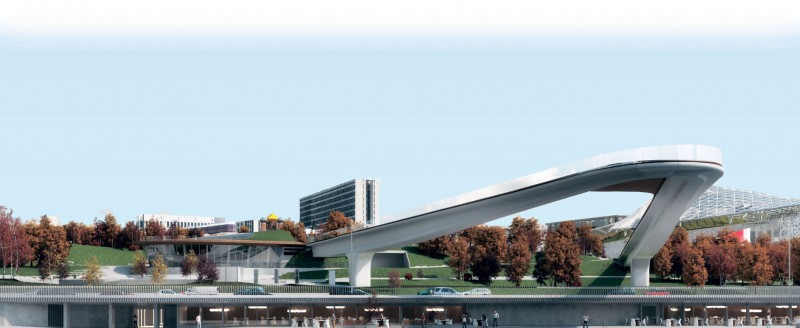
 Read the text. Complete gaps A-F with the parts of the sentences marked by numbers 1-7. One part is extra.
Read the text. Complete gaps A-F with the parts of the sentences marked by numbers 1-7. One part is extra.
|
1 where you can now get direct access to the river |
AABCDEFEXTRA |
|
2 which was a huge collection of 43,000 silver coins from the 17th century |
AABCDEFEXTRA |
|
3 which include northern forests, steppe and meadows |
AABCDEFEXTRA |
|
4 that overhangs the road and river by 63 metres |
AABCDEFEXTRA |
|
5 which will be on display |
AABCDEFEXTRA |
|
6 this protects against puddles and ice |
AABCDEFEXTRA |
|
7 which was built during the 12th-13th centuries |
AABCDEFEXTRA |

 Listen as you read the text again. Tell your partner three things you have learnt about Zaryadye Park.
Listen as you read the text again. Tell your partner three things you have learnt about Zaryadye Park.
 In small groups collect information about other steps that have been made towards urban development in Moscow. Write a short article for the school English magazine.
In small groups collect information about other steps that have been made towards urban development in Moscow. Write a short article for the school English magazine.
What is your favourite delicacy? What ingredients does it consist of?
 What do you know about Moskva Cake? What else would you like to learn? Write down three questions.
What do you know about Moskva Cake? What else would you like to learn? Write down three questions.
 Listen to and read the text to see if you can answer your questions.
Listen to and read the text to see if you can answer your questions.

Many cities around the world are famous for their distinctive delicacies – like Budapest's Esterhazy. Cities like St. Petersburg, Kiev, Boston and New York have all got their own cakes and each of them has its own story. So, it was surprising that Moscow didn’t have its own special dessert. Leading pastry chefs from across Moscow came up with the idea to create Moscow’s cake. Moscow’s government supported the idea and organised a contest.
It was agreed that the cake would be chosen by both Muscovites and experts. It should represent Moscow as a city. Both experienced pastry chefs and people who just love to cook should be able to bake it. This way, it would become a truly festive treat that everyone could enjoy.
To help judge the competition an expert committee was created. It included many important chefs and bakers. The well-known baker Aleksandr Seleznev, founder of Aleksandr Seleznev’s Confectionery, was chairman of the committee. Other chefs were on the committee – like Lara Katsova, host of the TV programme Home Cooking; Maxim Syrnikov, a researcher of Russian cuisine; and Alexei Zimin, a famous chef and food critic. Famous actors, musicians, athletes and Muscovites, members of “Active Citizen” were on the committee, too.
The competition began when the largest Russian confectionery company, United Confectioners, created five cakes using popular ingredients. Each of the recipes was unique:
“Nut with Condensed Milk”, a cake that consisted of four merengue layers with a filling made of condensed milk (boiled in a can) and hazelnuts;
“Exotic Cocktail” which consisted of two merengue cakes with grated almonds, and layers of raspberry jelly and exotic fruits mousse;
“Raspberry Almond”, an almond cake with a filling made of butter and custard, and a raspberry coating;
“Chocolate Strawberry”, a sponge cake with strawberries and a milk chocolate filling;
“Pistachio with Cherries” which consisted of hazelnut sponges layered with cherry jelly and pistachio mousse.
On 5th, September, 2015, an online vote was launched on the website http://tortmoskva.ru/. Citizens could also vote during the Moscow Autumn Festival as well as in large department stores and catering enterprises. Additionally, a survey was conducted in cafés and confectionaries throughout the capital. Plus, 50 special polling stations with posters and ballot boxes, decorated in the form of cake boxes, were set up around the city. 100,000 ballots were printed for the survey.
More than 50,000 people took part in the voting on the official website alone. As a result of the vote, three cakes were shortlisted. These were the “Nut with Condensed Milk", “Pistachio Cherry” and “Chocolate Strawberry” cakes. At the final stage, “Nut with Condensed Milk” became Moskva Cake! No wonder! Condensed milk is used in every household in Moscow and hazelnuts are very popular in Russia.
Now, Moskva cake is produced in bakeries and pastry-shops across the capital. You will often see it in special boxes in the windows of cafés, restaurants and shops.
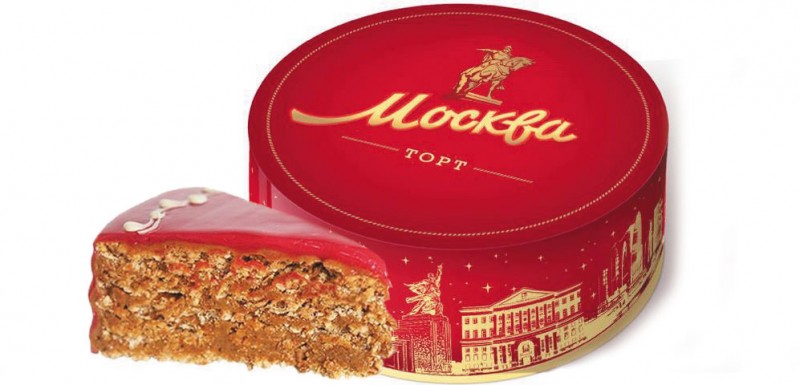
Read the text and decide if sentences 1-6 are T (true), F (false) or NS (not stated).
|
1 Muscovites wanted to have their city’s typical dessert. |
TTFNS |
|
2 The idea behind the competition was to create a cake that |
TTFNS |
|
3 The committee consisted of twenty people. |
TTFNS |
|
4 There were five special recipes presented during the competition. |
TTFNS |
|
5 The competition lasted for two weeks. |
TTFNS |
|
6 It was strange that “Nut with Condensed Milk” cake became Moscow’s cake. |
TTFNS |
 Read the text again. Explain how Moskva cake was created.
Read the text again. Explain how Moskva cake was created.
 In small groups collect information about other delicacies that Muscovites love. Prepare a presentation for the class.
In small groups collect information about other delicacies that Muscovites love. Prepare a presentation for the class.
What means of transport do you usually use? Why?
Have you ever used the Moscow Central Circle? How much do you know about it? Write a few questions. Read the text to see if you can answer your questions.
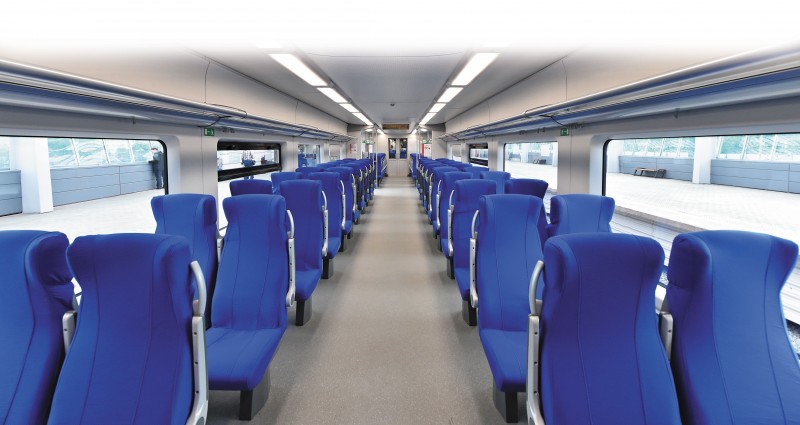

 Read the text and for each gap (1-7) choose the correct word to fill in.
Read the text and for each gap (1-7) choose the correct word to fill in.

Construction of the Moscow railway circle line (MCC) began in 1903. Five years later it was completed. It 1) a 54km long circular border around Moscow. Originally, it was used to transport both passengers and freight. It even had ticket
offices and heated waiting rooms at the stations.
Over time only freight trains used the line. As Moscow grew and grew, the MCC turned out to be in the centre of the capital. Industrial factories stopped using it and the demand for public transport 2) .
It wasn’t until the 21st century, though, that people began to see the true potential of the railroad. With so many traffic problems, engineers 3) to the railway circle line for a solution. They saw that it could encourage more people to develop the areas around it. These areas would need a fast and convenient transport system – that is where the railroad (today the Moscow Central Circle or MCC) 4) in.
They started running passenger trains on it. This partly solved the problem of providing public transport for the capital’s former industrial areas. The MCC runs across 26 of Moscow’s districts and is 5) by 2 million people – residents of these districts. So, after many years of construction builders finished renovating it and opened the MCC to the public on 10th, September, 2016. There are 31 stations in the MCC. You can make 17 interchanges to 11 metro stations and 10 interchanges to 9 radial railroad stations. What is more, it connected the MCC to the third interchange circle.
The new generation “Lastochka” trains can run on the MCC. There are 42 of these trains, each can fit up to 1,200 people and can travel up to 160km/h without 6) their passengers with noise. Passengers don’t have to wait more than 6 minutes in peak hours for a train. What’s more, it’s free to change to use the metro and the MCC because both use the same type of ticket. All stations of the MCC are built as interchange hubs. Their structure will include offices, shopping malls, shops and cafés.
A lot of the great landmarks of the city are also connected by the MCC. These include parks like: Mikhalkovo, the Central Botanic Garden, VDNH, the National Park of Losiny Ostrov, and the Vorobyovy Gory Nature Reserve. Today, trips across the capital have become faster and more convenient. Moscows Central Circle is 7) the way to the future.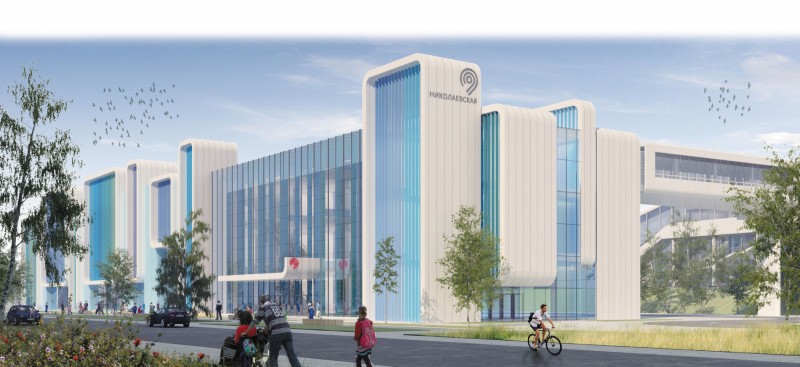
|
1 shaped |
formed | grew |
developed |
|
2 increased |
extended | gained |
expanded |
|
3 viewed |
considered | turned |
moved |
|
4 worked |
went | passed |
came |
|
5 surrounded |
speculated | consisted |
formed |
|
6 confusing |
disturbing | involving |
spoiling |
|
7 taking |
showing | directing |
leading |

 Listen to and read the text again. Tell your partner a few interesting things you remember from the text.
Listen to and read the text again. Tell your partner a few interesting things you remember from the text.
 In small groups collect more information about the Moscow Central Circle. For example, how many people use it daily? What happened on the opening day? Are there any other interesting facts? Prepare a digital presentation for your class.
In small groups collect more information about the Moscow Central Circle. For example, how many people use it daily? What happened on the opening day? Are there any other interesting facts? Prepare a digital presentation for your class.
Look at the title and the headings of the texts. Do you know where these places are? What is special about these places? What can you see or do there? Read to find out.

 Read the text given below. Form derivatives from the words written in capital letters at the end of the lines and marked by numbers 1-6 to make them match the contents of the text grammatically and lexically. Each gap corresponds with a separate task from group 1-6.
Read the text given below. Form derivatives from the words written in capital letters at the end of the lines and marked by numbers 1-6 to make them match the contents of the text grammatically and lexically. Each gap corresponds with a separate task from group 1-6.

Moscow aims at raising its citizens’ environmental 1) (AWARE). In this direction, it organises eco trails around 2) (PROTECT) areas to show Moscow’s nature parks to the public. The eco trails have been constructed around five protected areas. These include nature and historical parks Kuzminki-Lyublino, the Bitsa forest, Serebryany Bor, as well as the Vorobyovy Gory Nature Reserve. A lot of these trails are equipped for 3) (ABLE) people. On each of these trails a guide can take visitors along the routes and show them the interesting flora and fauna of the area.
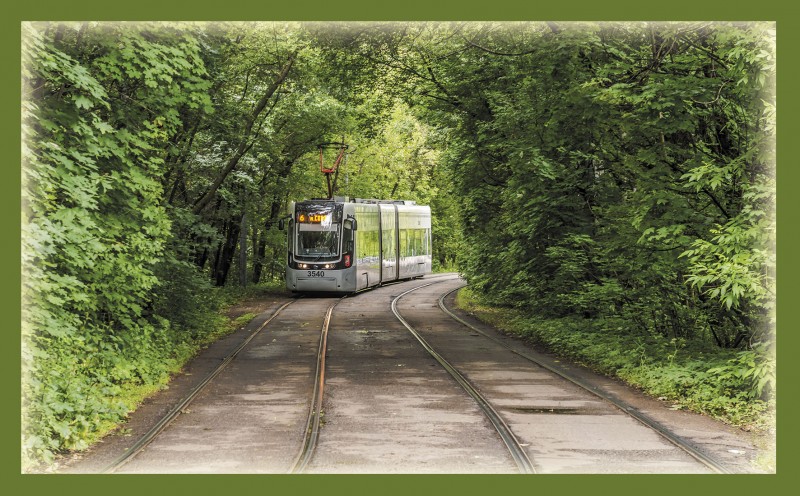
Eco trail “On the terraces of Vorobyovy Gory”
In 2005, the first eco trail in Moscow was opened in the Vorobyovy Gory Nature Reserve. This trail consists of three routes: “On the slopes of Vorobyovy Gory”, “Andreev ponds” and “On the terraces of Vorobyovy Gory”. The 4) (LONG) of the routes is more than 1.5 km. Along the trail you can find special signs and stands which provide information about the nature reserve, its history, and the flora and fauna. There is a special focus on the rare plants and animals that inhabit the place.

Eco trail “Around Bezdonnoe lake”
This trail covers 9.65 hectares and it is 1,237 metres long. It forms the shape of a loop near the lake. Along the route, visitors can see houses for ducks, aviaries with cranes, herons, vultures and kestrels, and a bird city with feeders for birds. Since the trail opened more than 5,000 people have walked along the route.
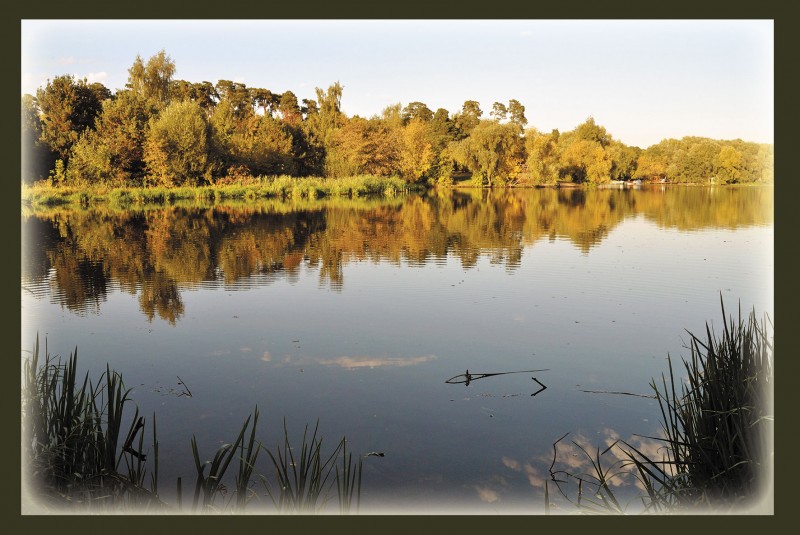
Eco trail “Serebryany Bor”
This trail also forms a loop. It has got a true bird city with a lot of houses and feeders for ducks, as well as aviaries for herons and vultures. There are a lot of 5) (DANGER) birds and animals in the area – a lot of which are on the Red List of Threatened Species. So, specialists did their best to reproduce the same environmental conditions as the animals’ wild habitats. Visitors can also get 6) (ADD) information about each species on special stands along the trail.
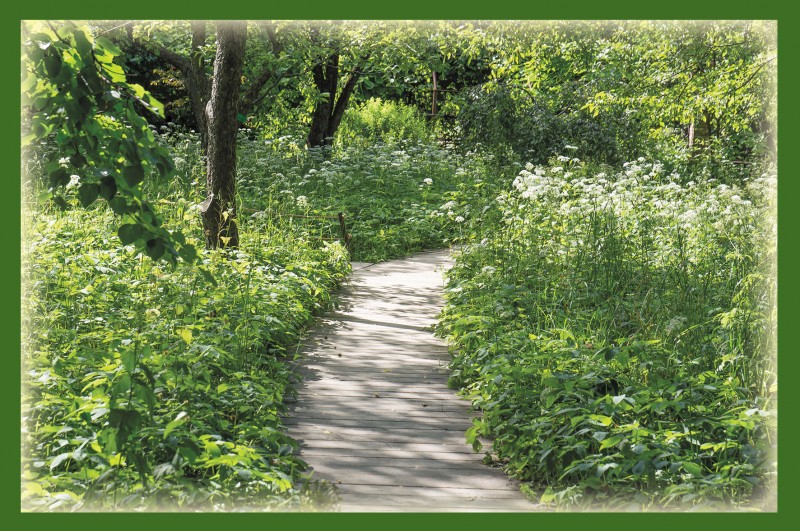

 Listen to and read the text again. Tell your partner three things you remember about the eco-trails.
Listen to and read the text again. Tell your partner three things you remember about the eco-trails.
 In small groups collect information about other ecotrails and nature reserves in Russia. Write short texts. Present your work to the class.
In small groups collect information about other ecotrails and nature reserves in Russia. Write short texts. Present your work to the class.
Compare your school to the ones in the photos. How do you feel when you are in your school?

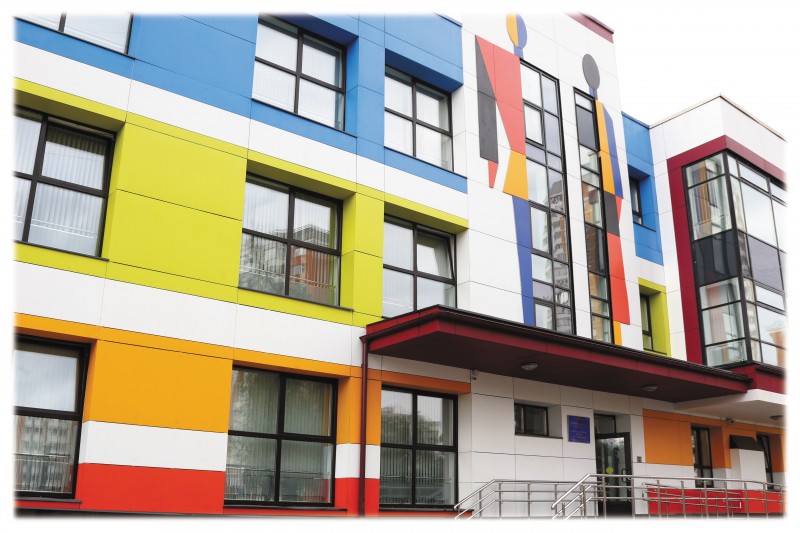
What are new schools in Moscow like?
 Listen and read to find out.
Listen and read to find out.

In Soviet times Moscow schools were built according to the standards and needs of Soviet society. Buildings did not differ much from each other as there were only a few set designs for architects to use.
Nowadays Moscow schools are developing in new and exciting ways. They are viewed as not just places of learning but also as social institutions. This is because Moscow government has introduced the concept of openness in schools. Therefore, Moscow schools are also performing far more social functions. They are museums, places where people can learn vocational skills, and centres of lifelong education for Moscow citizens. They are also used as places where various conferences and events can be held. Schools even function as sports centres in their districts. As a result of these changes, Moscow schools are now centres of public life for the neighbourhoods.
The changes that are happening in Moscow schools are due to recent breakthroughs in the area of child psychology. According to the researchers, a pupil’s motivation and performance are directly connected to the furniture, colours and lighting design of their environment. In the research The School I’d Like: Reflections on an Education for the 21st Century, psychologists from Cambridge University came to the conclusion that teenagers need bright colours in schools. Bare and boring furniture does not encourage students to concentrate while in class; it actually discourages them. Similar research was carried out in Russia by Moscow Architectural Institute. It showed that a pupil’s motivation to keep learning decreases when they are in school buildings that all look the same and have dull interiors. Most of the children interviewed said they felt the need for comfortable rooms, bright wall designs and public areas.
For Moscow’s architects and builders these findings provided a reason to reconsider the established views on the design of schools. The face of the Moscow school is changing. Schools are becoming real brands with their own image. They are becoming comfortable places that encourage pupils to go to school every morning.
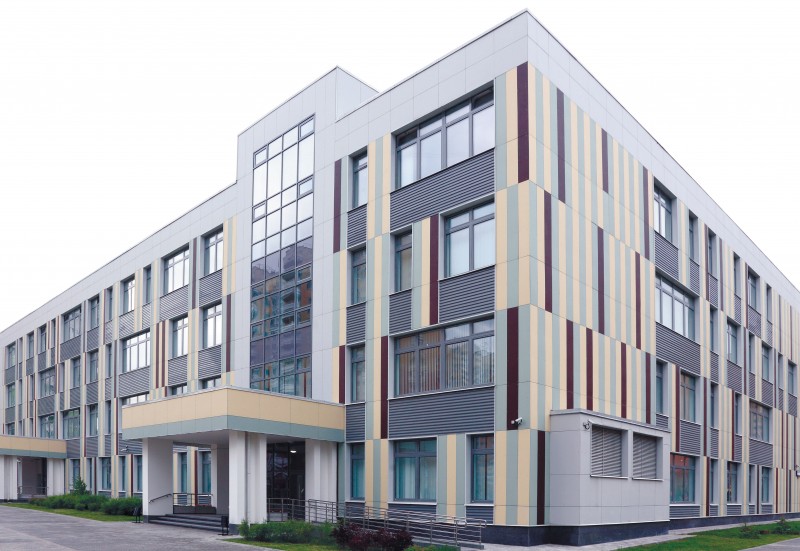
Read the text again and answer the questions.
1 What were school buildings like in the past?
2 What are school buildings used for today?
3 Why are schools different today?
4 What did the study in Cambridge University reveal?
5 In what ways can pupils be motivated?
 How can school buildings affect the pupils according to the text? Do you agree or not? Why?
How can school buildings affect the pupils according to the text? Do you agree or not? Why?
 In small groups collect information about other modern buildings in Moscow. Write a short article.
In small groups collect information about other modern buildings in Moscow. Write a short article.